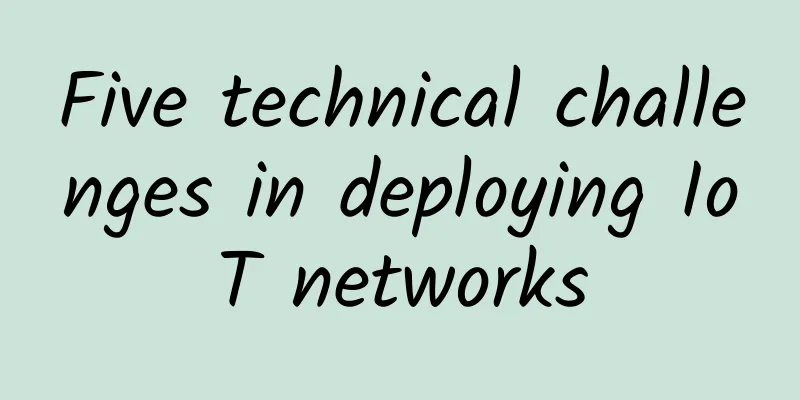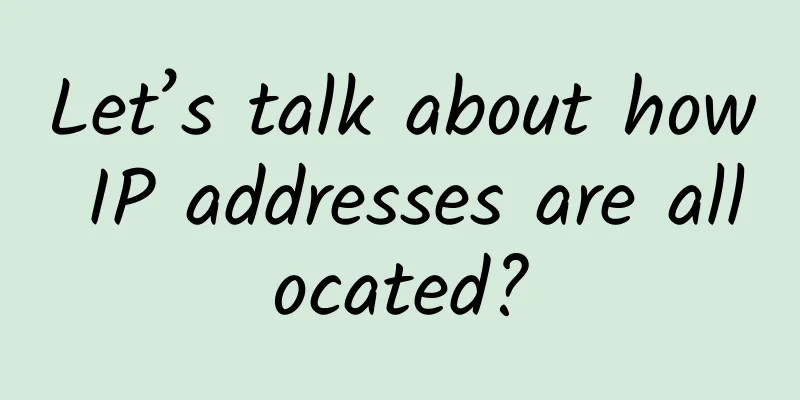Five technical challenges in deploying IoT networks

|
Network architects and system engineers beware—getting an IoT network in place isn’t as simple as it looks. From the astronomical number of connected devices and connections to the promise of increased efficiencies and new sources of growth, the Internet of Things has been widely discussed and has high hopes. However, as many IT teams can attest, investing in the infrastructure to support IoT projects is not easy. Deploying an IoT network requires acquiring these devices from the right procurement sources, ensuring their security, and appropriately choosing the connections and protocols that go with these connected devices.
Next comes the control of the gateway/network and determining the best location for data storage, management, and maintenance. There is also the question of how, where, and by whom the data is analyzed. All of this adds up to huge challenges that CTOs and network architects (not to mention application developers) will face in managing devices, networks, and backend services. With this in mind, we have identified five major technical challenges in building and deploying IoT networks: 1. Safety When it comes to IoT, there are various layers of information security, from devices and gateways to networks and the cloud, where most data will ultimately reside. Security often results from vulnerabilities in the endpoint or in the software itself. End-to-end encryption is critical whether data is at rest or in transit. Security threats are nearly limitless. IoT devices are small and cheap with little or no physical security, while some computing platforms (often limited by memory and computing power) sometimes cannot support sophisticated security algorithms due to weak encryption or low CPU cycles. There is also the physical danger of devices being tampered with or stolen, as well as device software not being updated, making it more vulnerable to cyberattacks. Experts say simply monitoring the flow of data packets in and out of IoT devices is not enough to ensure security, and network management and data logging are also key to preventing and stopping attacks. 2. Platform IoT platforms, whether developed in-house or externally, need to be sufficiently scalable and reliable. Enterprises want to control their data and protect their intellectual property (IP), while ensuring that the platform can handle large amounts of data and connect with existing legacy systems. It's important to carefully consider which vendors you want to work with, the costs involved, and determine how these platforms will connect with your existing IT architecture. Adam Leach, R&D director at Nominet, said: “When it comes to IoT, the main challenges for network architects are to secure the network and have the confidence that they are making the right choices in terms of sensor hardware, radio technology or cloud platform. "Network architects would do well to avoid being locked into a single platform vendor, for example, finding themselves locked into an outdated hardware or software platform when better products become available." IOB contributing editor Jan Maciejewski explains that there are many IoT platforms to choose from. “Everyone claims to have an IoT platform, so the debate is about how to choose the right one… and get compatibility. Also, the platform’s scalability and integration with legacy systems are particularly important to choose.” 3. Interoperability and Standardization Networks can be connected via a variety of communication protocols, and experts say standardization is essential if the Internet of Things is to survive and thrive. “The first challenge is planning the physical design of the network and figuring out exactly where to put the sensors,” Leach said. “After that, you have to plan a connectivity strategy for those sensors and then implement it.” But he acknowledged that interoperability is crucial in the long run. "In the short term, it is often more important to deploy a system. However, in the long run, interoperability is definitely a good thing and it is key to the sustainability of the Internet of Things." Bas Geerdink, IT manager at ING, added: “Despite various attempts through Bluetooth, ZigBee, NFC, Wi-Fi, LoRA, there is currently no clearly understood and widely accepted standard communication protocol.” Interoperability is very important. Understanding connectivity protocols and other network standards is essential to making IoT more efficient, otherwise, every new project will have to go through the same hassle of connectivity setup, programming interfaces, etc. again. We have seen similar situations with other technologies before, and despite having many vendors and standards to choose from, things have settled down over time, so I believe the IoT market will find a solution as well.” Finally, network architects also need to address the integration of all these new systems with existing legacy platforms and analytical tools, which is not a trivial challenge. Therefore, smart planning is essential to ensure that new and old systems are properly interconnected, integrated, and operate seamlessly. 4. Data Storage and Analysis IoT devices will generate a large amount of data, and enterprises must then decide how to store, analyze, and gain insights from this data. For example, how much data can a PaaS or data analytics provider keep at the edge and how much can be monitored in the cloud? How should this data be transmitted and stored while complying with industry governance and international laws? Analyzing this data can help enterprises make proactive, data-driven decisions and gain a deeper understanding of their network operations. At the same time, predictive analysis tools provided in conjunction with network management systems can provide detailed network performance indexes and application operation reports. This can be as simple as automatically prioritizing data traffic, determining if a new service or application being rolled out will exceed current network capacity, or agreeing to provide additional bandwidth at specific times for data query processes. 5. IoT Sensors A sensor network is a collection of distributed sensors that monitor physical or environmental conditions such as temperature, humidity, sound, pressure, etc. The data from each sensor is transmitted over the network. Network architects will need to monitor and maintain them, while from an IT perspective there are procurement issues as well. Data management, security, reliability and accessibility of the sensors all need to be considered during the initial bidding process. Geerdink added: “Network architects should be aware of the sheer scale that IoT brings, where today architects only have to deal with a few connection points (servers, computers/laptops), the number of endpoints that IoT brings is simply enormous.” |
>>: How to improve the operational capabilities of data centers?
Recommend
DogYun celebrates the 25th anniversary of Hong Kong's return to China. Hong Kong server is available for 2 months at 450 yuan, dual E5/32G/1TB SSD/20M bandwidth
DogYun has launched a special promotion for the 2...
Talk about Multi-Access Edge Computing (MEC) based on SDN
The development of data generation and data proce...
5G packages are cheaper, with the price per GB of traffic reduced to 4.4 yuan: Do you meet the requirements?
In November 2019, when 5G was officially commerci...
The outbreak of 5G still cannot prevent the overall decline of the mobile phone market
In this year hit by the epidemic, sales in the mo...
The SD-WAN track has changed. When will the dragon trainer appear?
In an environment where cloud computing, mobile a...
Promote high-quality development of 5G digital "new infrastructure" through development model innovation
The CPC Central Committee and the State Council a...
Do you understand these IPv6 issues?
[[348221]] 1. We are currently using IPv4 network...
As 5G applications take root in various industries, how can we create healthy competition?
When it comes to 5G networks, the first perceptio...
Can't connect to Wi-Fi? Tsinghua University has developed the "ultimate solution"
While Wi-Fi is one of the greatest inventions of ...
Understanding Overlay Network Technology
Introduction In the traditional historical stage,...
NIO implements chat room: everything starts with the basics of network programming!
1. Write at the beginning Hello everyone, I'm...
In addition to speed, what are the key technologies of 5G?
[[285321]] 5G is not just about faster internet s...
Have you ever thought about why TCP needs to handshake before sending data?
When I look at computer networks, there is always...
How will 5G and edge computing develop in 2020?
At the beginning of the new year of 2020, there w...
These four routers are the most worth buying during the shopping festival, covering all high, medium and low end
[[432368]] This year's 11.11 Shopping Festiva...









